World Coins: Counterfeit Sovereigns
Posted on 6/11/2013
A popular series for counterfeiters has always been sovereign coins. Sovereign coins are often readily available and are a major bullion issue that is recognized worldwide. These factors have made them popular targets for counterfeiters looking to cheat both collectors and buyers of government-issued bullion. This month we will highlight a few such fake sovereign coins.
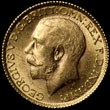
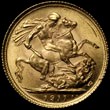 This first coin is a counterfeit Canada 1911-C sovereign. This coin was likely made to deceive collectors since a high-grade Canada 1911-C sovereign commands a much larger premium than the gold content of a common sovereign. This fake is gold and within the weight tolerance. However, under closer examination several issues will appear to the trained numismatist that betray the coin as a copy. First, the portraits of George V and St. George are slightly mushy and ill-defined when compared to an authentic, mint-issued piece. On the obverse of the coin several spikes are seen behind the back of the head of George V and off the rim through the lettering. Genuine sovereigns will not exhibit this type of poor tooling on the production dies.
This first coin is a counterfeit Canada 1911-C sovereign. This coin was likely made to deceive collectors since a high-grade Canada 1911-C sovereign commands a much larger premium than the gold content of a common sovereign. This fake is gold and within the weight tolerance. However, under closer examination several issues will appear to the trained numismatist that betray the coin as a copy. First, the portraits of George V and St. George are slightly mushy and ill-defined when compared to an authentic, mint-issued piece. On the obverse of the coin several spikes are seen behind the back of the head of George V and off the rim through the lettering. Genuine sovereigns will not exhibit this type of poor tooling on the production dies.

 The next coin is an Australian 1892-M sovereign, also counterfeit. This piece weighed correctly, however it was only about 85% gold while legitimate examples are .917 fine or 91.7% gold. Like the 1911-C Canadian Sovereign mentioned above, this coin also features a mushy portrait and several tooling spikes coming from the denticles and in front of the crown on the obverse.
The next coin is an Australian 1892-M sovereign, also counterfeit. This piece weighed correctly, however it was only about 85% gold while legitimate examples are .917 fine or 91.7% gold. Like the 1911-C Canadian Sovereign mentioned above, this coin also features a mushy portrait and several tooling spikes coming from the denticles and in front of the crown on the obverse.
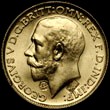


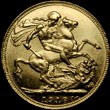 These next two sovereigns are counterfeits made in the Middle East. One is a Great Britain 1914 sovereign, the other is an Australia 1918-P sovereign. Both coins exhibit Arabic countermarks, a sign they were made as replicas (likely to skirt harsh anti-counterfeiting laws that some Middle Eastern countries have). These coins failed the test for correct metallic content: the 1914 tested at about 86% gold and the 1918 at about 89% gold - both short of the 91.7% gold found in authentic examples. Curiously, the Australian 1918-P sovereign’s Arabic countermarks read “22” for 22 karat gold, which would be correct for a genuine sovereign, but this piece falls short.
These next two sovereigns are counterfeits made in the Middle East. One is a Great Britain 1914 sovereign, the other is an Australia 1918-P sovereign. Both coins exhibit Arabic countermarks, a sign they were made as replicas (likely to skirt harsh anti-counterfeiting laws that some Middle Eastern countries have). These coins failed the test for correct metallic content: the 1914 tested at about 86% gold and the 1918 at about 89% gold - both short of the 91.7% gold found in authentic examples. Curiously, the Australian 1918-P sovereign’s Arabic countermarks read “22” for 22 karat gold, which would be correct for a genuine sovereign, but this piece falls short.
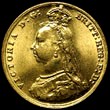
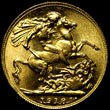 Finally, this counterfeit India 1918-I sovereign has a major problem: the obverse features Queen Victoria. Queen Victoria died in 1901 and no Indian sovereigns were made during her lifetime - while there are 1918-I sovereigns, they feature King George V, the British monarch in 1918. The coin is obviously fake - diagnostics include the mushy portrait, doubled rim on the obverse, wrong size lettering, and bad tooling in the fields. This counterfeit tested at only 80% gold, far short of the 91.7% that an authentic example would contain.
Finally, this counterfeit India 1918-I sovereign has a major problem: the obverse features Queen Victoria. Queen Victoria died in 1901 and no Indian sovereigns were made during her lifetime - while there are 1918-I sovereigns, they feature King George V, the British monarch in 1918. The coin is obviously fake - diagnostics include the mushy portrait, doubled rim on the obverse, wrong size lettering, and bad tooling in the fields. This counterfeit tested at only 80% gold, far short of the 91.7% that an authentic example would contain.
Sovereigns have always been a popular bullion coin -- issued by a trusted government, they are coins that investors, dealers, and collectors can rely on for gold content and a fun and challenging series to collect. However, there are many counterfeit sovereigns, including some very deceptive pieces. The danger is not only buying a fake sovereign, but also getting one that possesses far less gold than it should.
Stay Informed
Want news like this delivered to your inbox once a month? Subscribe to the free NGC eNewsletter today!